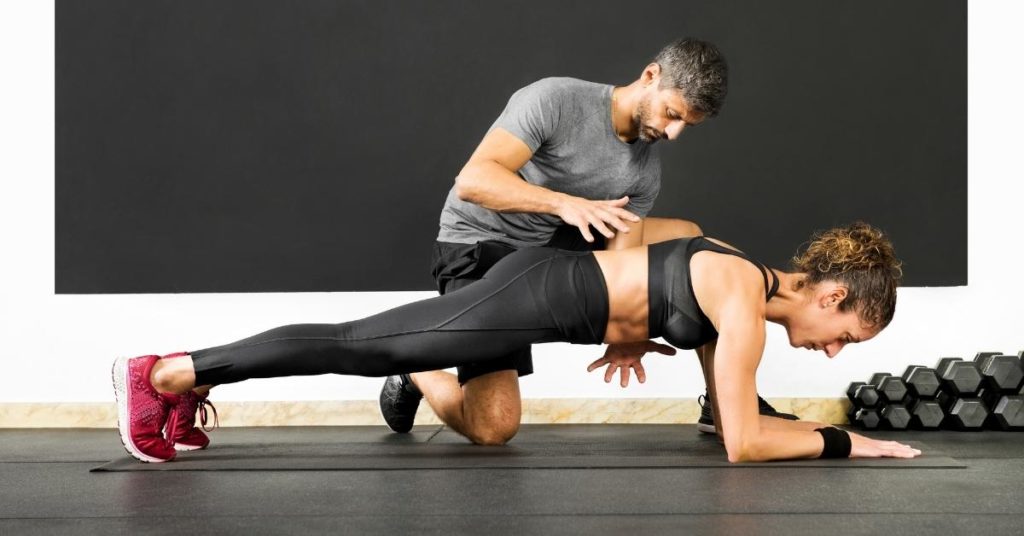Core. It’s More Than What You Think.

Focus on it less, to focus on it more
By Patrick Rado & Vyshnavi Sivakumaran, Founders of Fitness In Place
There are two common misconceptions about “the core.” The first is that having a “good core” or a strong core, has anything to do with the way it looks. The second is that “core” and your “abs” are mutually exclusive, they are interchangeable terms, as if they mean the same thing. Of course, there is some crossover here, your abdominals are in fact part of your core. However, if for example; when going to the gym, you do a lot of crunches and sit-ups, you are in fact training your abdominals but not your core. A lot of people are doing a lot of ab training but not a whole lot of true core training.
Since we as a society are thoroughly obsessed with how our midsection looks, we want to address and hopefully dispel some misconceptions first. A “good looking” core has largely very little to do with what it can do and how it can serve us. On the flip side, a strong core doesn’t necessarily mean a visible core. Overwhelmingly, visible abdominal muscles have to do with your body fat percentage. Everyone has a “six pack,” it’s a question of whether the muscles are visible. We support people in their desires to look how they want, to feel good about themselves, no matter the amount of toxic beauty standard baggage they’re carrying with them. As personal trainers, we aren’t the best equipped to address all of that but we need to be aware of it.
The Core is actually a far more important region than we give it credit for. It’s the middle ground that joins our body together. It supports us (or rather, it should support us) in virtually all movements that we engage in. Even while sitting (if we’re sitting like we should be with good posture).
In addition to being much more than just how it looks, your core is much more than just your “abs.” Like many things in life, it’s the sum of its parts. Your core does include your outer abdominals and your obliques (the front and side show off muscles). But it also includes your inner abdominals, which sit deeper, underneath your show abs – also known as your rectus abdominis. As well as, the often neglected and unsurprisingly pain plagued because of this, lower back. This is not including the pelvic stabilizers (arguably also a part of your core – at the very least regional assistants) like your glutes and hips.
It’s important to understand that your core is all the way around and all the way through, from your abs to your lower back. All of which are meant to work together to stabilize your body in movement. Each muscle has its respective functions, and for a healthy, functional core, they work best together. So, if you’re like most people who have been obsessively training just your outer abdominals, it’s time to expand your core training to include all of the core. Neglecting the importance of something like your lower back, can open you up to injury and chronic, nagging pain.
The importance of having a stronger lower back aside, we can’t stress this enough: obsessively engaging in abdominal exercise is the least effective way to achieve a strong core or visible abs. In fact, one of the best ways to build muscle, strength and function in the core, the whole core, is actually to do more non-core specific exercises. These are “big body,” compound exercises that require your core to engage in addition to other parts of your body. For example, a front-loaded squat requires a great deal of core strength and engagement to maintain proper upright posture, in addition to obviously working the legs. This is much more functional, much more challenging, and if you are interested in losing some body fat, it will burn much more energy than a bunch of crunches.
Each of these respective core muscles all have certain functions but generally the core functions to create stability – serving to hold things in place, restricting things from moving so as to prevent injury. Take plank exercises, not a movement but a hold. The same goes for the front-loaded squat example from before, your core muscles should be bracing when doing a front squat – static, not moving.
Your abs and your obliques act to bend, rotate and “flex” the spine. A good way to understand spinal flexion is to understand the opposing function of the lower back, which extends the spine, or erects it. The technical term for the lower back muscles is “spinal erectors.” In layman’s terms, abs round the spine and the lower back arches the spine. Too much rounding or arching is bad, which is why we want the abs and the lower back functioning about equally to maintain proper posture. This is why people are so often plagued by low back pain; a weak and inactive core in general but in particular a weak and inactive lower back. Your spine in general needs stability from your back muscles to stay in alignment.
On the other hand, your inner abdominals function to draw your outer abdominals and lower back together inward. “Stomach vacuums,” the act of sucking your belly button inward towards your spine, is a great exercise to develop this little-known core function.
It’s time to zoom out. Think functional, think big, full body movements. You’ve got a whole body to exercise, and focusing less on your core will often focus on it more.
